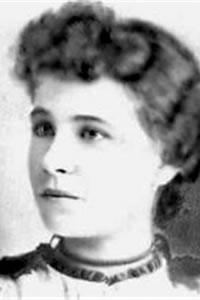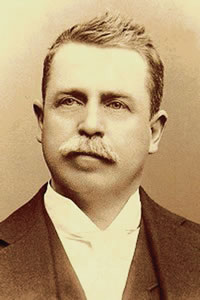America The Beautiful’s Back-story

|
While recently putting the finishing touches on a book about Alexander Joy Cartwright Jr., the father of baseball, and his 1849 Gold Rush journey across North America - which would lead him to Hawaii, where he’d spend the rest of his days as one of the kingdom’s leading citizens - I inadvertently stumbled upon the fascinating back-story of how the great American anthem/hymn America the Beautiful came to be.
Pertinent to the forthcoming book, The Ball That Changed The World, I initially stumbled upon one of the more obscure verses of America the Beautiful. I found its celebration of the pioneers, and its relevance for modern America’s ills, apropos to include in the book:
O beautiful for pilgrim feet Whose stern impassion’d stress
A thoroughfare for freedom beat
Across the wilderness. America! America!
God mend thine ev’ry flaw, Confirm thy soul in self-control,
Thy liberty in law.
The coming Independence Day holiday seems like a good time for sharing, as Paul Harvey might say, the rest of the story about this beautiful song.
It begins in 1893, when Katharine Lee Bates, 33, a poet and English professor at Wellesley College in Massachusetts, from which she had graduated, took a train trip across the continent to Colorado Springs to teach summer school at Colorado College. On weekends she ventured out to enjoy the “purple mountain majesty” of Colorado’s wilds with other faculty. Inspired especially by a climb up 14,000-foot Pike’s Peak - and recalling the passing beauty of the “fruited plain” she’d seen each day on the train - she was inspired to write.
Returning from Pike’s Peak to her room at Antlers Hotel, she began writing a poem she would title Pike’s Peak. As she later explained to friends, many nations have achieved greatness through military might, but Bates believed America’s greatness would be earned in goodness and brotherhood.

|
Her poem was published originally in The Congregationalist, retitled by its editors America to commemorate Fourth of July 1895, and was immediately popular.
It was still, however, simply a poem.
But then it was inspiringly paired with the perfect music - which already had lyrics, a hymn titled O Mother Dear, Jerusalem by church organist/composer Samuel Augustas Ward, who later retitled it Materna. It’s said that as Bates had been inspired to write her poem, Ward was inspired to compose his tune. It came to him on a ferry from Coney Island back to New York City at the end of a summer day in 1882, 11 years before Bates’ Colorado adventure. Ward was so anxious to write it down, he asked his friend Harry Martin for his shirt cuff to write on.
Bates’ poem set to Ward’s music was first published in 1910 as America the Beautiful, and was instantly and eternally popular. (It had previously been sung to a number of other melodies, including Auld Lang Syne. As late as 1926, the National Federation of Music Clubs sponsored a contest to find a tune that was not so “somber,” but none of the entries were deemed worthy.)
Unfortunately, Ward died in 1903, not knowing he’d helped create a musical national treasure. Fortunately for Bates, by the time she passed away in 1929 the song was already part of our national consciousness. Late in her life she would say, “That the hymn has gained, in these 20-odd years, such a hold as it has upon our people is clearly due to the fact that Americans are at heart idealists, with a fundamental faith in human brotherhood.”
Some have called it America’s hymn, and it’s often been proposed as our national anthem. Devotees of the song prefer its references to the beauty and goodnesss of America to the visions of bloody battle described in Francis Scott Keys’ Star-Spangled Banner.
America the Beautiful is certainly easier to sing.
And though a hymn, it’s not as overtly religious as God Bless America.
A couple of side notes:
In 1972 when President Richard Nixon made his ground-breaking “ping pong diplomacy” visit to the People’s Republic of China, the Chinese played America the Beautiful as welcoming music. Turns out the Chinese characters for United States can be translated as “beautiful country.”
And it turns out that Bates, the daughter of a New England preacher, fell in love with an older Wellesley colleague who headed the economics department, Katharine Coman, and lived happily with her for many years until her partner’s death in 1915. Bates wrote of her love for Coman in her poetry book Yellow Clover.
Here’s another of Bates’ lesser known verses from America the Beautiful, though one that Ray Charles thankfully included in his iconic 1972 recording, which gets my vote for best recorded (and least “somber”) version ever:
O beautiful for heroes prov’d In liberating strife, Who more than self their country loved,
And mercy more than life. America! America!
May God thy gold refine Till all success be nobleness,
And ev’ry gain divine.
Well said, Ms. Bates, well said.
And a happy Independence Day weekend to all.
E-mail this story | Print this page | Comments (0) | Archive | RSS Comments (0) |
Most Recent Comment(s):





 Del.icio.us
Del.icio.us








